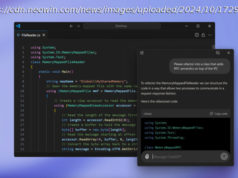Testing self-driving cars in California is like playing a video game on the « easy » setting, because it’s nice all the time and basically temperate year-round…
Testing self-driving cars in California is like playing a video game on the “easy” setting, because it’s nice all the time and basically temperate year-round. Autonomous vehicles face significant challenges when it comes to more extreme weather conditions, which are a standard part of certifying any current cars for legal road-ready status.
Waymo, Alphabet’s self-driving car project, has already done testing in winter weather to help ensure its technology stack can operate in cold climates, and now it’s taking its new Chrysler Pacificas on the road for a test trip to the desert, where it’ ll run into extreme heat at the other end of the spectrum.
Death Valley is one of the hottest places in the world – temperatures have reached highs that can melt tires, particularly in and around the July 4 weekend timeframe. Extreme temperatures tend to produce potentially unexpected behavior in electronics, so bringing your sensitively tuned sensing equipment to those kinds of conditions to see what happens is a necessary step in preparing them for broad consumer availability.
Waymo does all kinds of testing of its autonomous tech in various conditions, but with every generation of new sensor and compute equipment, it’s worth finding out if things still behave as intended.






